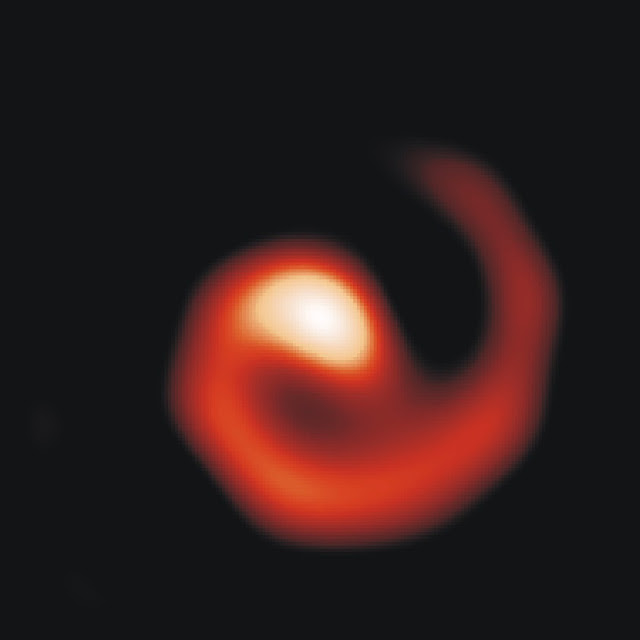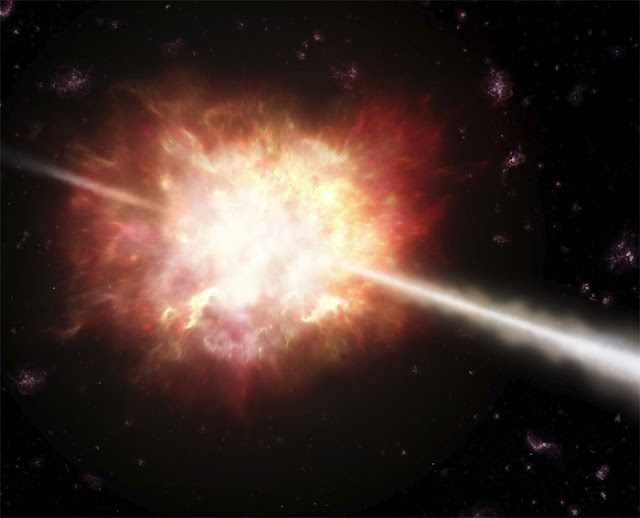Welcome to the Series of Hottest thing in the Universe:- (Part -3)
Let's get hotter. At 1 TeraKelvin things get weird. Remember that Plasma (in Part-2 of the series- Hottest thing in the Universe) we were talking about that the Sun is made of?
Well at TeraKelvin, the electrons aren't the only thing that wander away.
The hedrons themselves, the protons and neutrons in the nucleus melt into quirks and gluons, sort of soup.
But how hot is a TeraKelvin? Frighteningly hot.
There's a Star named WR 104, about 8,000 light years away from us.
 |
| WR 104 |
It's mass is the equivalent of 25 of our Suns and when it dies, when it collapses, its internal temperature will be so great that the energy emitted, the Gamma Radiation it flings out into space will be stronger than the entire amount of energy our Sun will ever create in its entire lifetime.
Gamma ray bursts are quite narrow, so Earth is most likely safe, but what if it wasn't?
 |
| Gamma Ray Bursts |
Well, when WR 104 collapses, even though Earth is 4,702 trillion miles away, the energy it releases would still be bad news.
Exposure for 10 seconds would mean losing a quarter of Earth's Ozone layer, resulting in mass extinction, food chain depletion and starvation from 8,000 light years away.
Closure to home, right here on Earth in Switzerland, scientists have been able to smash protons to nuclei, resulting in temperatures much larger than 1 TeraKelvin = 1,000,000,000,000 K.
They've been able to reach 2 to 12 ExaKelvin range.
1 ExaKelvin = 1,000,000,000,000,000,000 K.
Bet we are okay because those temperatures last for an incredibly brief moment and only involve a small number of particles.
Remember, how we could calculate the wavelength of of the radiation emitted by an object based on its temperature? (in Part - 2 of this Series)
Well if an object were to reach a temperature of 1.41 times to the 32 Kelvin .
(255,000 billion billion billion °F
or
141,000 billion billion billion °C)
The Radiation it would emit would have a wavelength of 1.616 times 10 to the negative 26th nano meters, which is tiny.
Like so tiny, it actually has special name.
It is the Planck Distance, which according to quantum mechanics, it is the shortest distance possible in our Universe.
No comments:
Post a Comment
Let me know guys what you think about this.